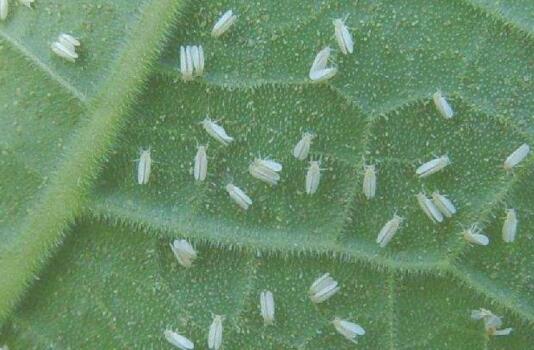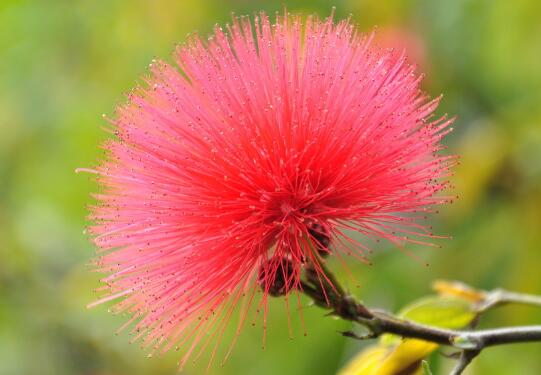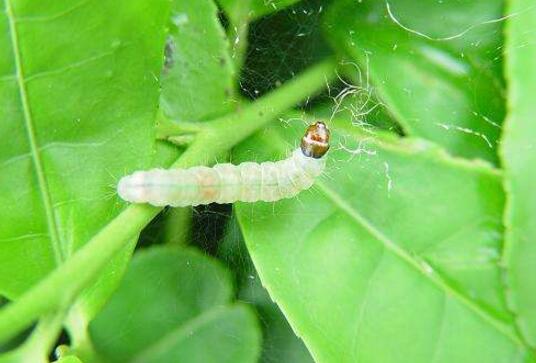What about the one-leaf orchid worm, the disease and pest control of one-leaf orchid / five tricks to avoid the early fall of leaf yellow
Although the one-leaf orchid has a strong resistance to diseases and insect pests and its own adaptability is also very strong, if you do not understand the correct culture method of one-leaf orchid, it may still be disturbed by many diseases and insect pests. Let's take a look at the prevention and control methods of diseases and insect pests of Cymbidium.
What about the one-leaf orchid worm
1. Whitefly

Occurrence regularity: usually occurs in spring and summer, the best development temperature of whitefly is 26-28 degrees, its adults and nymphs will absorb the sap from the leaves of Cymbidium, resulting in leaf shrinkage and early defoliation, and even soot disease, resulting in plant thinness and death.
[control methods]: ① adjusts the planting period and fertilizer application rate, etc., to improve the environment around the leaf orchid, and the period is cleaner and cleaner; ② is sprayed with 40% omethoate diluted into 1000 times solution; ③ protects the natural enemies of whitefly, such as Hemiptera insects and predatory mites.
2. Aphids
When it appears in the tender leaves or new buds of Cymbidium, it will cause the leaves to be greasy and yellowish, and leave black or yellow spots on the leaves, resulting in yellowing and shedding of leaves, which is one of the most common pests in the prevention and control of diseases and insect pests.
[control method]: ① sprinkles plant ash on the plant, or brushes off the aphids with a brush; ② is diluted to 1000 times the concentration of imidophos and sprayed once every 7-10 days, usually about 3 times to eliminate most aphids.
Prevention and control of diseases and insect pests of Cymbidium
1. Coal pollution disease
There are black mildew spots on the leaves and branches, and then the tender shoots are covered with black mildew layer, and there are many kinds of coal fouling disease, so the symptoms will be slightly different, but generally the black mildew layer is the main feature.
[prevention and treatment]: one of the causes of ① coal fouling disease is that the plants are too dense and the environment is not well ventilated, so the prevention should be pruned in time. The method can refer to the detailed description of how to prune a leaf orchid; ② disease is sprayed with 1000 times of omethoate or 1500 times of dichlorvos.
2. Leaf blight
The old leaves of a leaf orchid turn yellow and appear brown disease spots, which begin to extend to the base of the leaves, and finally the leaves become grayish brown, while small black spots appear on the back of the leaves.
[control methods]: ① increases organic fertilizers such as phosphate and potash to improve the ventilation of the environment; ② is sprayed with a solution diluted to 600x with 70% mancozeb.
3. Grey mold
The diseased leaves will soften and rot, and white watery markings will appear on the surface, and then become gray mold spots, and water spots will also appear on the new tender stems, resulting in the leaf rot and withering of the leaf orchid, which is very harmful in the prevention and control of diseases and insect pests.
[prevention and treatment]: when ① finds diseased leaves, it should be removed in time to avoid bacteria harming other leaves; ② is sprayed with 50% isocarbamide or 20% pyridamyramine with water, once every 7 days, usually 2-3 times.
Prevention and control methods of common diseases and insect pests of one-leaf orchid (Latin name: Aspidistra elatior Blume.), also known as spider holding egg, alias big leaf evergreen, bamboo leaf plate, Kowloon plate, bamboo tendon and so on, Liliaceae, spider holding egg genus. Perennial evergreen persistent-rooted herb, rhizome subterete, 5-10 mm in diam., articulate and scaly. Leaves solitary, 1-3 cm apart, rectangular-circular-lanceolate, lanceolate to nearly elliptic, 21-46 cm long and 8-11 cm wide, apex acuminate, base cuneate, margin ±wrinkled, green on both sides, sometimes with yellow-and-white spots or stripes; mainly distributed in southern China and Hainan Island, Taiwan Island and so on. Traditional Chinese medicine (TCM) is widely used in traditional Chinese medicine with rhizome components. The four seasons can be picked, dried or used freshly. It can promote blood circulation and dissipate blood stasis, tonify deficiency and relieve cough. It helps to treat injury, rheumatism, low back pain, cough due to lung deficiency and hemoptysis.
Control methods of common diseases and insect pests in Cymbidium lanceolata 1. Leaf spot disease often occurs in the leaves, there are yellow spots on the leaf surface at the initial stage of the disease, and round spots are gradually formed behind the face. Watering and fertilizing are easy to occur when they are often sprinkled on the leaves. Control method: spray 1000 times of carbendazim, spray once every 10-15 days, spray 2-3 times continuously. 2. Poor ventilation of shell insects is easy to occur in summer. Prevention and control methods: ventilation and light transmission should be carried out for a long time to reduce the incidence of disease; if shell insects are found to be harmful, iron should be applied to the root in time. Generally speaking, flowerpots with a caliber of 20 cm should be watered in time after burying 5% of domestic Tiemike 3-5 grams in each pot. It will be effective in 1 week. Prevention and Control of main Diseases and insect pests of Cymbidium
1. Leaf spot disease often occurs in the leaves, there are yellow spots on the leaf surface at the initial stage of the disease, and round spots are gradually formed after the surface. Watering and fertilizing are easy to occur when they are often sprinkled on the leaves.
Control method: spray 1000 times of carbendazim, spray once every 10-15 days, spray 2-3 times continuously.
2. Shell insects are prone to poor ventilation in summer.
Prevention and control methods: ventilation and light transmission should be carried out for a long time to reduce the incidence of disease; if shell insects are found to be harmful, iron should be applied to the root in time. Generally speaking, flowerpots with a caliber of 20 cm should be watered in time after burying 5% of domestic Tiemike 3-5 grams in each pot. It will be effective in 1 week.
- Prev

What about the growing insects of albizzia, pest control of albizzia flower / 3 insect pests 1 disease
The acacia flower is a kind of flower planted all over the world, which is highly ornamental, but if it is not careful in the breeding process, there will still be bad phenomena such as diseases and insect pests, which will affect the ornamental nature of the albizzia flower in its eyes. in serious cases, it will still lead to the phenomenon of wilting.
- Next

What about the ivy worms? the prevention and control of ivy diseases and insect pests / finding the right cause is crucial.
Ivy is not a very delicate plant, its ability to adapt to the environment is relatively strong, but in the process of growth, if you do not understand the breeding methods of ivy, it will inevitably be plagued by diseases and insect pests.
Related
- Fuxing push coffee new agricultural production and marketing class: lack of small-scale processing plants
- Jujube rice field leisure farm deep ploughing Yilan for five years to create a space for organic food and play
- Nongyu Farm-A trial of organic papaya for brave women with advanced technology
- Four points for attention in the prevention and control of diseases and insect pests of edible fungi
- How to add nutrient solution to Edible Fungi
- Is there any good way to control edible fungus mites?
- Open Inoculation Technology of Edible Fungi
- Is there any clever way to use fertilizer for edible fungus in winter?
- What agents are used to kill the pathogens of edible fungi in the mushroom shed?
- Rapid drying of Edible Fungi

